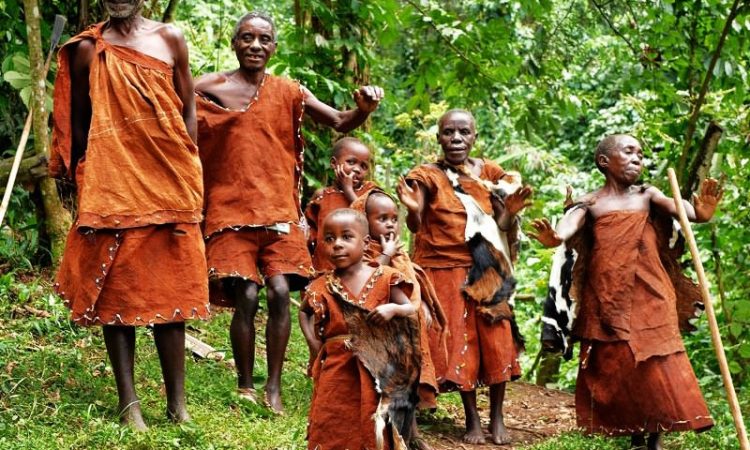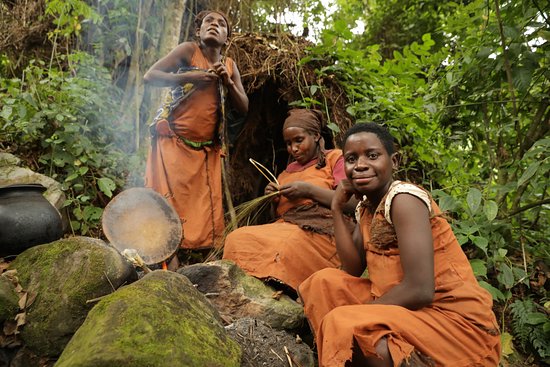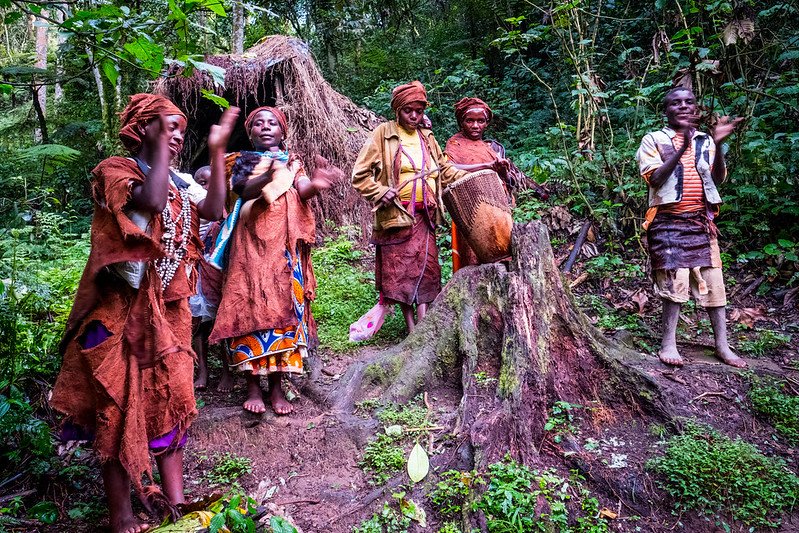Batwa Cultural People, Guardians of Bwindi Forest and Mgahinga, also known as pygmies, are an indigenous group inhabiting the Bwindi Impenetrable Forest and Mgahinga Gorilla National Park regions in Uganda. With a rich history, unique culture, and intimate connection to their natural surroundings, the Batwa people have contributed significantly to the region’s cultural diversity and are instrumental in promoting tourism and conservation efforts. This essay will delve into various aspects of their lives, including their history, daily activities, dress code, height, meals, economic activities, traditional dance, life span, health, leadership, population, and their contributions to tourism and the government.

History:
The Batwa have a long and complex history, believed to span thousands of years. Historically, they were hunter-gatherers who lived in harmony with the forest, relying on its resources for survival. However, with the establishment of national parks and conservation efforts, their traditional lifestyle and land were disrupted, leading to their displacement from their ancestral territories.
Daily Activities:
The Batwa people have adapted to their changing circumstances and now engage in a variety of activities. While some still rely on traditional practices like hunting and gathering, many have embraced agriculture, small-scale trade, and tourism-related activities. Daily life for the Batwa often involves working in their gardens, collecting medicinal herbs, crafting traditional items, and engaging with visitors interested in their culture.
Dress Code:
The Batwa people traditionally wore clothing made from animal skins and plant materials. However, with the influence of neighboring communities and modernization, their dress code has evolved. Today, they commonly wear Western-style clothing, though during cultural events and performances, they may adorn themselves with traditional attire made from vibrant fabrics and accessories.
Height:
On average, the Batwa people are of short stature, with an average height ranging from around 4 feet 6 inches to 5 feet. This characteristic is a result of genetic factors and adaptation to their forest environment.
Book a 3 days Gorilla safari with the batwa cultural trail.
Meals:
Traditionally, the Batwa relied on hunting, gathering, and forest resources for their sustenance. Their diet included wild game, fruits, tubers, honey, and various plants. However, with limited access to their ancestral lands, their diet has diversified to include crops cultivated in their gardens, such as beans, maize, bananas, and vegetables.

Economic Activities:
The Batwa people engage in various economic activities to sustain their livelihoods. Agriculture, including subsistence farming and cash crops, plays a crucial role. They also participate in the production and sale of traditional crafts, such as baskets, pottery, and carvings, which are sought after by tourists. Additionally, the Batwa contribute to the tourism industry as guides, sharing their cultural knowledge and leading visitors on immersive forest experiences.
You can book a safari to Queen Elizabeth National Park, to have an experience of lion tracking, Ishasha, and Kazinga Channel boat experience.

Traditional Dance:
The Batwa are famous for their vibrant traditional dances, which are an integral part of their cultural heritage. These dances feature rhythmic music, energetic movements, and storytelling elements. The dances often depict aspects of their hunting traditions, celebrations, and spiritual beliefs, allowing them to preserve their cultural identity and pass it down through generations. During your gorilla safari in Bwindi Impenetrable and Mgahinga Gorilla National Park, you shouldn’t miss out of this amazing cultural safari.
Life Span and Health:
The life span of the Batwa people is comparable to that of the general population in the region. However, their health and access to healthcare remain significant concerns. Historically, the Batwa had extensive knowledge of medicinal plants and traditional healing practices. Efforts are being made to improve their access to healthcare services and ensure the preservation of their traditional knowledge related to medicinal plants.

Leadership and Population:
The Batwa communities are typically organized around clan structures led by chiefs or elders. These leaders play important roles in decision-making, conflict resolution, and maintaining cultural practices within their communities. The Batwa population in the Bwindi Forest and Mgahinga area is estimated to be several thousand, but specific figures are challenging to ascertain due to the nomadic nature of some communities and limited data.
Contribution to Tourism and the Government:
The Batwa people have made substantial contributions to tourism in the Bwindi Forest and Mgahinga region. Their rich cultural heritage and close relationship with the forest make them valuable guides and cultural ambassadors, enhancing visitors’ experiences. The government and conservation organizations recognize their significance, working together to provide support, educational programs, and initiatives that empower the Batwa people and enable them to participate in the benefits of tourism while preserving their cultural identity. The government has also made efforts to address the historical marginalization of the Batwa group of people.
Book a wildlife safari to explore Uganda’s beauty and culture
In conclusion, the Batwa, or pygmies, living in the Bwindi Forest and Mgahinga region, represent a unique and vibrant cultural group with a deep connection to their ancestral lands. Despite historical challenges, the Batwa have adapted to changing circumstances, engaging in various economic activities while preserving their traditional practices. Their contributions to tourism, conservation, and cultural diversity are invaluable, and efforts are ongoing to ensure their empowerment, health, and preservation of their rich heritage.








